
Software and Performance
The lighting and all other settings are configured, of course, through the Synapse software. It's well known that Synapse initially requires an internet connection for the user to log in to their Razer online profile any time you want to access any of the settings on a new machine. While you can set the software to offline mode permanently afterwards, we're still not convinced of the need to do so at all. There are certainly benefits to having the online profile, such as cloud storage and synchronising of your settings, which could be handy if you want to use your mouse on multiple PCs or have multiple users on one PC using the same mouse, but it still seems unnecessary to force everyone through this first step. Still, it's been that way for a while now and is unlikely to change.Profiles and settings are handled entirely through Synapse as well. There is no ability to program even one profile directly to the device, which we think is particularly strange for a mouse marked as a Tournament Edition. That said, in our recent interview with Razer's CEO, Min-Liang Tan, we were told that Razer now has the ability to make tournament-grade drivers that allow you to take settings with you offline, as long as you have a USB stick or something similar.
While we still have our reservations about Razer's approach to software, it's definitely doing a lot right as well, as once you're in Synapse is slick, intuitive and very functional – it's easily one of the best such software suites to use. Profiles can be imported and exported and easily linked to specific programs. Button customisation is strong too; each of the 11 functions (nine buttons and scroll up/down) can be reprogrammed to a wide variety of commands, as shown. Under the Performance tab, users can adjust the DPI between 100 and 16,000 in 1 DPI steps, including independent x and y-axis tweaking – a level of control far beyond anything we've seen so far. The Synapse macro editor is also extremely responsive and very easy to get to grips with.
The lighting can be quickly changed between one of five effects (or turned off altogether) under the Lighting tab. However, more complex effects can be programmed by opening up the Chroma configurator, which allows you to create layers from the various lighting zones and assign lighting effects to them independently. These effects are heavily customisable too – you could honestly spend hours fine-tuning things if you really wanted.
Of course, all of this customisation is useless if the Mamba Tournament Edition doesn't perform well, but thankfully it satisfies there as well. There's a pleasant action on the main buttons, though they're not the lightest we've used – MOBA players may want to take note there. The thumb buttons are very well placed, and elongated so as to cater for different thumb sizes. The DPI buttons are a touch thin, and the rear one especially does feel quite far back and a stretch to reach. However, the action on them is actually rather light, so you wouldn't want them too close to the scroll wheel or you'd risk triggering them accidentally.
The rubberised finish on the scroll wheel is first class and the steps are really well-defined as well. We did have some issues with the sideways clicking, however. As we click the scroll wheel with our index finger, we would often trigger the scroll left command when we only meant to depress the scroll wheel directly down. We have had this issue with such scroll wheel before, and you can avoid it with practice and conscious effort, but a little extra resistance in the sideways clicks would have been nice – we'd be tempted to disable the side scrolls in game to avoid potential mishaps in the heat of battle.
Lastly, the performance of the new sensor is great as well. We definitely had no need to go anywhere near the maximum DPI level, even on a 4K monitor, but the option is there if you need it. At more realistic levels, the mouse offers excellent tracking that's smooth and jitter free with no built-in acceleration (unless you add it via the software). As a laser mouse, it also works very well on less than ideal surfaces too. Using a low DPI and large sweeping movements, we did still encounter a little jitter when repositioning the mouse, but the lift off distance did still feel fairly low.
Conclusion
On the one hand, the Mamba Tournament Edition is one of the most expensive mice on the market, which instantly makes it hard to recommend. On the other, it's absolutely brimming with features, well built and a joy to use. Compared to the DeathAdder Chroma, it offers four extra buttons, with the DPI change ones being especially useful, and more complex lighting. It also offers 6,000 more DPI, although honestly the 10,000 in the DeathAdder is more than enough as it is far practically everyone. In the end, if you've got the cash to blow, the Mamba Tournament Edition is unlikely to let you down, provided you no issues with the way Synapse works. However, for almost everyone else, even with the impressive sensor specs it's difficult to justify the outlay when mice like the Roccat Kone XTD and Asus ROG Gladius can be had for less than £60.-
Design36 / 40
-
Features33 / 35
-
Value14 / 25


MSI MPG Velox 100R Chassis Review
October 14 2021 | 15:04

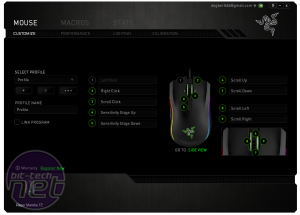
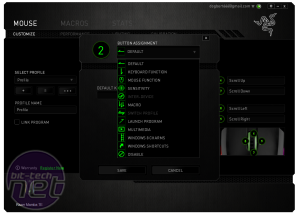
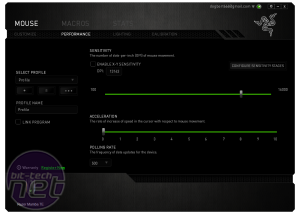
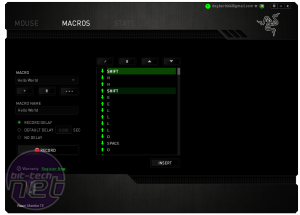
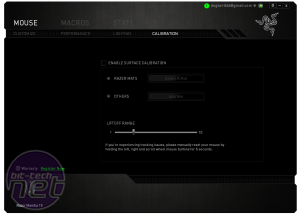
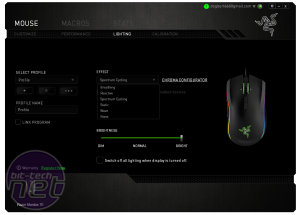

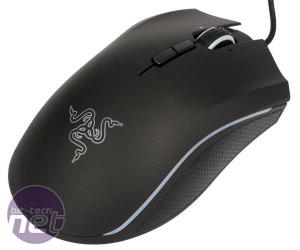
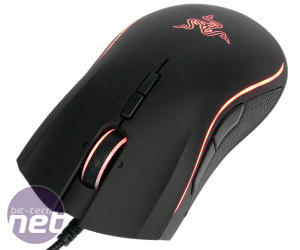
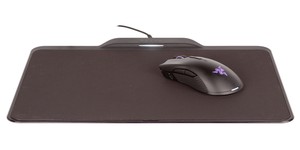






Want to comment? Please log in.